1910 THAMES 8HP 'CYNOSURE' TWO SEATER Registration No. CE 2431 Chassis No. 704 Engine No. 5 Engine: vertical single-cylinder 4½ x 5 ins. bore and stroke, 1,305cc, with mechanical valves, water-cooled, magneto ignition; Gearbox: three speed and reverse, cone clutch, shaft drive to overhead-worm-gear back axle; Suspension: front and rear, semi-elliptic leaf springs; Brakes: rear-wheel & transmission brakes. Wooden artillery wheels. Right-hand drive. The Thames Shipbuilding & Engineering Company was based at Greenwich, to the east of London, their shipyard being further down-river at Woolwich Reach. Building large ships on the River Thames had been in decline even at the time that Brunel built the Great Eastern there in the 1850s, and although by the turn of the century period 'Thames Ironworks' had built around 900 ships since its founding in 1857, it needed to diversify its activities. In 1898 it had acquired a marine engine business and in 1902 commenced building steam wagons at the Greenwich site. Internal-combustion engined vans were soon introduced and passenger cars followed in 1906. These were in design and appearance very much of the Napier pattern - their designer C.K. Edwards being a former Napier employee. Initially the cars had six-cylinder engines of 45 and 60 horsepower, and with one of the latter 9½ litre machines former Napier racing driver Clifford Earp set World records at Brooklands for 50 and 150 miles at speeds around 76 mph in December 1907. Smaller two and four-cylinder cars were built and in 1910 a single-cylinder model was introduced that with its 4½ ins. cylinder bore had an RAC rating of eight horsepower, and paid road tax commensurate with this, but in fact it was a more beefy unit than the rating suggests. The car was initially described as having 'variable gear' transmission, but when production started a conventional gearbox was used. Although it was a 'light car', weighing in at 10 hundredweight without body, it was not a flimsy machine, weight being saved by intelligent design, not skimpiness. A good example of this is the chassis side-rails that are beautifully tapered from their mid-point to the extremities, a form more familiar in the chassis profile of the Bugatti Type 35 of a decade later. Attention to detail and quality engineering are evident wherever one looks on the surviving car and one suspects that it was just too expensive to build even at a selling price of £240 - this being about £50 above par in the very competitive light car market. Also, at the time that this Thames model was introduced most light cars had at least two cylinders, small fours would soon be common, and these had greater customer appeal, whether this was justified or not. Furthermore, Thames applied some rather odd names to its models, the Doctor's Coupé being called the 'Chirurgeon', a long out-dated word for a surgeon. Apt it may have been, but it is not easy to say and one doubts that it would have quickened the pulse of a prospective buyer. However well-made the cars were, and however cleverly if obscurely named, the Thames Ironworks motorcar venture did not prosper and the business had closed by the end of 1913. This is believed to be the only surviving Thames motorcar, indeed only one other Thames vehicle is known to survive, the huge 1913 motor stage-coach that was on display at Beaulieu for many years and is now in the Dutch National Automobile Museum. The car carries a not quite finished very good copy of the original body. This has unusual curvaceous lines with all-in-one flowing mudguards and running boards, and the windscreen and hood-frame are present. There is also a removable rear box-like section that carries a steel-framed spider seat, which may have been an early addition as adverts of the period do not show such an appendage. All the important mechanical elements of the car plus its controls and ancillaries (apart from the magneto) appear to be present, but it will require comprehensive res
1910 THAMES 8HP 'CYNOSURE' TWO SEATER Registration No. CE 2431 Chassis No. 704 Engine No. 5 Engine: vertical single-cylinder 4½ x 5 ins. bore and stroke, 1,305cc, with mechanical valves, water-cooled, magneto ignition; Gearbox: three speed and reverse, cone clutch, shaft drive to overhead-worm-gear back axle; Suspension: front and rear, semi-elliptic leaf springs; Brakes: rear-wheel & transmission brakes. Wooden artillery wheels. Right-hand drive. The Thames Shipbuilding & Engineering Company was based at Greenwich, to the east of London, their shipyard being further down-river at Woolwich Reach. Building large ships on the River Thames had been in decline even at the time that Brunel built the Great Eastern there in the 1850s, and although by the turn of the century period 'Thames Ironworks' had built around 900 ships since its founding in 1857, it needed to diversify its activities. In 1898 it had acquired a marine engine business and in 1902 commenced building steam wagons at the Greenwich site. Internal-combustion engined vans were soon introduced and passenger cars followed in 1906. These were in design and appearance very much of the Napier pattern - their designer C.K. Edwards being a former Napier employee. Initially the cars had six-cylinder engines of 45 and 60 horsepower, and with one of the latter 9½ litre machines former Napier racing driver Clifford Earp set World records at Brooklands for 50 and 150 miles at speeds around 76 mph in December 1907. Smaller two and four-cylinder cars were built and in 1910 a single-cylinder model was introduced that with its 4½ ins. cylinder bore had an RAC rating of eight horsepower, and paid road tax commensurate with this, but in fact it was a more beefy unit than the rating suggests. The car was initially described as having 'variable gear' transmission, but when production started a conventional gearbox was used. Although it was a 'light car', weighing in at 10 hundredweight without body, it was not a flimsy machine, weight being saved by intelligent design, not skimpiness. A good example of this is the chassis side-rails that are beautifully tapered from their mid-point to the extremities, a form more familiar in the chassis profile of the Bugatti Type 35 of a decade later. Attention to detail and quality engineering are evident wherever one looks on the surviving car and one suspects that it was just too expensive to build even at a selling price of £240 - this being about £50 above par in the very competitive light car market. Also, at the time that this Thames model was introduced most light cars had at least two cylinders, small fours would soon be common, and these had greater customer appeal, whether this was justified or not. Furthermore, Thames applied some rather odd names to its models, the Doctor's Coupé being called the 'Chirurgeon', a long out-dated word for a surgeon. Apt it may have been, but it is not easy to say and one doubts that it would have quickened the pulse of a prospective buyer. However well-made the cars were, and however cleverly if obscurely named, the Thames Ironworks motorcar venture did not prosper and the business had closed by the end of 1913. This is believed to be the only surviving Thames motorcar, indeed only one other Thames vehicle is known to survive, the huge 1913 motor stage-coach that was on display at Beaulieu for many years and is now in the Dutch National Automobile Museum. The car carries a not quite finished very good copy of the original body. This has unusual curvaceous lines with all-in-one flowing mudguards and running boards, and the windscreen and hood-frame are present. There is also a removable rear box-like section that carries a steel-framed spider seat, which may have been an early addition as adverts of the period do not show such an appendage. All the important mechanical elements of the car plus its controls and ancillaries (apart from the magneto) appear to be present, but it will require comprehensive res

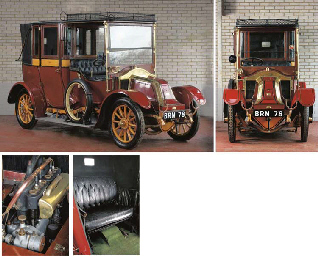

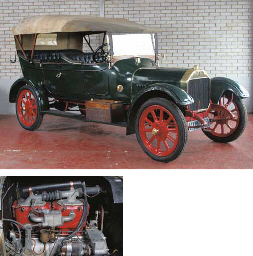
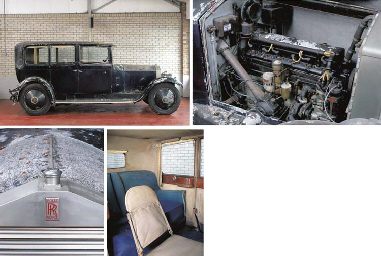
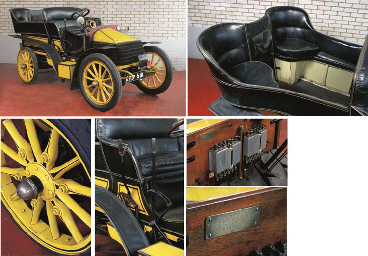
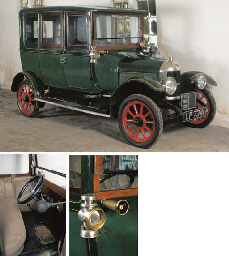
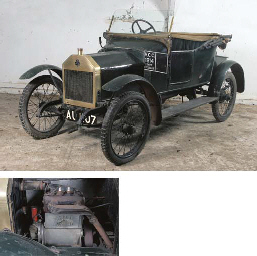
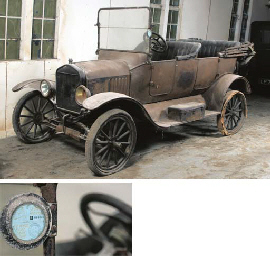
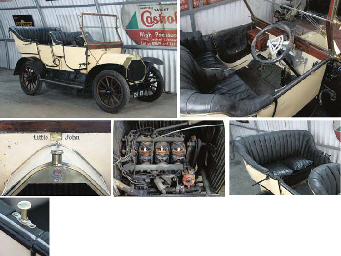
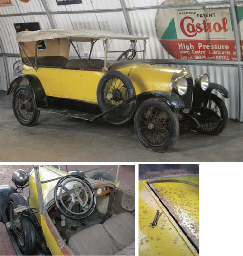
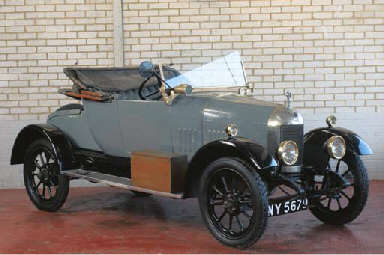
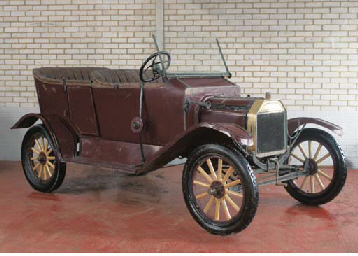
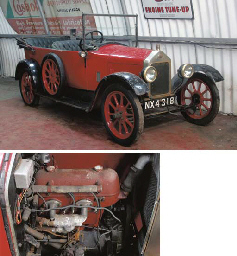
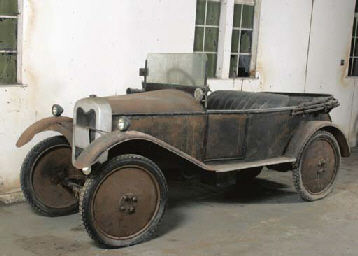
Try LotSearch and its premium features for 7 days - without any costs!
Be notified automatically about new items in upcoming auctions.
Create an alert